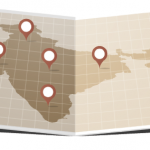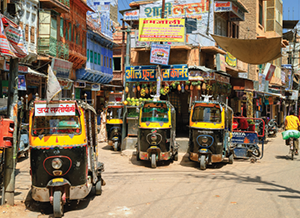
Auto rickshaws, also known as tuk-tuk, waiting for passengers in a daily market. Tuk-tuk is the most popular transport vehicle in India.
Boris Stroujko/shutterstock.com
In the good old days, physicians routinely made house calls. The decision to visit the literal bedside of a patient was practical: hospital services were primitive and often offered too little benefit to justify an emergency journey by the patient. These physicians carried leather bags, sometimes called Gladstones, that were filled with instruments for eventualities that could include delivering a baby to amputating a limb that had been grievously crushed or infected. An ampoule of morphine was a prized therapeutic and, undoubtedly, more effective than some of the herbs and poultices that then constituted medical therapy.
Times have changed. A physician making a house call in the U.S. is a rare sight indeed—except perhaps for people with special concierge plans. Instead of visiting homes in the city or countryside, physicians now visit countries. Replacing the venerable black bags, today’s physicians carry freezer chests packed with vaccines and antibiotics and cargo boxes filled with textbooks and medical equipment.
In another important trend, universities and medical schools have created institutes and centers to address healthcare from a worldwide perspective. These global health programs, which are attracting some of the best and brightest young minds, have been game-changers and have led to extraordinary advances in clinical care and research.
Act Locally
Despite recognition of the gigantic healthcare problems overseas, many in the medical profession, as in many other fields, have embraced the concept of “Think globally; act locally” as their guiding principle.
I, for one, have been both a local thinker and local actor and have practiced in the same exact place in Durham, N.C., for almost 39 years. The needs in medicine are always great, and caring for patients anywhere is one of life’s highest and most rewarding callings. In medicine, good deeds do not require long journeys.
My own awakening interest in this area began with the Bone and Joint Decade (BJD). The BJD was a worldwide initiative from 2000–2010 that had the formal recognition of many governments and the World Health Organization, all committed to reducing the burden of musculoskeletal disease. At the end of the decade, in 2009, the organization held a meeting in Washington, D.C., to review its activities and commemorate its accomplishments.
The BJD meeting was a revelation.
At the meeting, I learned that the developing world has an enormous problem with musculoskeletal disease that makes this group of illnesses a major source of disability and diminished quality of life. The causes, however, are very different from those of the West. Indeed, in the poorer countries, damage to bones and joints occurs not from inflammation or degeneration but from trauma, with road injury from vehicular accidents a leading cause.
Heterogeneous Traffic
The World Health Organization estimates that 1.3 million people in the world die on the road each year and that the number could increase to 1.9 million by 2020. Further, as highlighted in studies on the global burden of disease published in the journal Lancet, road accidents not only kill, but they maim. Each year, 50 million people worldwide are seriously injured by road accidents.
Not only are serious accidents epidemic, but the ability of hospitals—especially those in rural areas—to handle the immediate consequences of complex fractures and other traumatic injuries can be limited. Recognizing the extraordinary toll of road accidents, the UN Road Safety Collaboration developed a Global Plan for the Decade of Action for Road Safety 2011–2020. On April 15, 2016, the UN General Assembly adopted a resolution on “Improving Global Road Safety.”
One source of the problem is evident: The developing world has many bad roads. Indeed, 90% of the casualties occur in developing countries.
Construction materials can be poor and street lights negligible. Ruts and potholes are frequent, causing drivers to swerve, veer and zig-zag to avoid a broken axle.
In addition, roads in the developing world are subject to a phenomenon called heterogeneous traffic. This type of traffic, which is comparatively rare in the West, occurs when people and conveyances of varying size and speed share the same space and compete for right of way. This situation makes collisions, crashes and other mayhem an everyday event.
Any crash on the roads is bad, but the mismatch of size, speed and composition (flesh vs. steel) magnifies the damage. Morbidity and mortality are high, exceeding that of some deadly infectious diseases, and the hazard to bone and joint is far beyond that of inflammatory arthritis and even osteoarthritis. A life walking with a stick or a crutch to support a shriveled leg is, unfortunately, very common among victims who have suffered fractures.
Despite the carnage of the roads, traffic in the developing world is often no more than a source of curiosity and amusement, even a good laugh. India is a case in point. The scene in the movie, The Best Exotic Marigold Hotel, in which Judi Dench, Maggie Smith and other pensioners ride a bus to their hotel is hilarious, but the scenario is real, not the creation of the special effects department.
One YouTube video I found called itself “a very funny look at India traffic.” No doubt, most of the 9 million viewers of this clip logged on to laugh at the raging chaos shown on a smog-clouded street. As I have learned subsequently, very few of my colleagues in rheumatology or orthopedic surgery have ever even heard of heterogeneous traffic, and I doubt that many textbooks in these fields list heterogeneous traffic in the section on the etiology of disease. I did not fully appreciate it until I witnessed it first-hand on a recent trip to India.
More so than anything recently, this trip has encouraged me to rethink my views on work overseas.
Any crash on the roads is bad, but the mismatch of size, speed & composition (flesh vs. steel) magnifies the damage. Morbidity & mortality are high, exceeding that of some deadly infectious diseases, & the hazard to bone & joint is far beyond that of inflammatory arthritis & even osteoarthritis.
A Visit to India
I took my trip to India with my wife a few years ago in March, at a time when the heat is intensifying but still tolerable. This trip was a pure vacation.
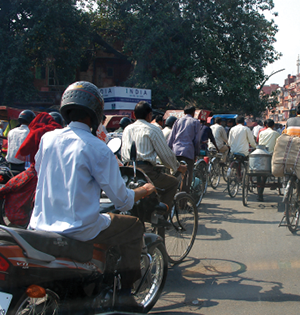
Traffic in India is chaotic, with many vehicles, including those that would be deemed unsafe in the U.S., crowding the busy streets.
Salvador Aznar/shutterstock.com
Usually, when I go overseas, it is for a meeting or conference and I spend three days in a dark conference room in a Hilton-like hotel in the downtown area, fighting against jet lag, struggling to catch the essence of ornate PowerPoint slides as intricate and colorful as a fine Spanish tapestry. Sometimes, I make what I call a jail break during one of the sessions, sneaking away with a friend to see paintings by Goya at the Prado or those by Klimt at the Belvedere. The only other parts of the country I see are the neighborhoods that border the highway or train tracks on the way from the airport and back.
My friends who have been to India had told me about the explosion of the senses that can weary or inspire. Although I may have wanted to “see India,” my wife and I preferred something safe, sedate and predictable. We, therefore, decided to get a package tour and hit the high points of the Golden Triangle—the Qutab Minar in Delhi, the Amber Fort in Jaipur and the Taj Mahal in Agra.
Having been warned about the ardors of driving and public transportation, we hired a van with an experienced driver to transport us from place to place during a week, including an excursion first to see Jodhpur, the “blue city” and site of the Mehrangarh Fort, and other places in the state of Rajasthan.
On the Road
Our driver’s name was Amir. He had a pleasant smile and thick black hair that was neatly parted. His English was quite good, and he acted as an informal tour guide, calling my wife “Mam.” Every day, he arrived exactly on time, looking clean shaven, his shirt neatly pressed. We never knew where he spent the night after he had dropped us off at our hotel, a Taj or Oberoi, part of the splurge. When asked about his lodging, Amir laughed and shook his head, declining to say.
We started the vacation in Delhi where we spent two days. On the first day in Delhi, with the worst case of jet lag I have ever experienced, I allowed myself to be trapped by a Kashmiri rug salesman, who plied me with tea. A master of haggling—a mixture of combat, blood sport and histrionic acting—he convinced me to buy a small rug. It was made of a special type of lustrous silk tied with thousands of knots that depict a profusion of flowers with rich colors of gem stones. It is beautiful. I know I was being swindled but the salesman said the rug would give my house a soul, and I fell for it.
My wife was furious at my weakness.
After trying to acclimate to the time zone, we then flew to Jodhpur to meet Amir who took us to see the palaces, forts and shrines on the way back to Delhi to complete the Golden Triangle. We drove up to five hours a day, carefully avoiding, at my wife’s insistence, any more rug dealers. Jewelry shops were allowed, however, because my wife believes that bracelets of garnets and rubies can also give a house a soul.
As I can confirm from the vantage point of the backseat of an air conditioned white Toyoto Land Cruiser, the variety of road travelers in India is staggering. At minimum, it includes people walking, as well as people on the following species or motorized vehicles: camels, donkeys, oxen, elephants, carts, bicycles, motor bikes, cars, rickshaws, buses, taxis, trucks and tuc tucs. Tuc tucs are a kind of scooter with a small enclosed passenger compartment; most are painted green and yellow. A tuc tuc is a cross between a taxi and a rickshaw.
The only things I did not see on the road were people on skateboards or roller blades.
The situation is more complicated, however. Because vehicles are in short supply and gas is expensive, people must travel cheaply. As a result, a family of four may ride together on the same motor bike. In a poor area, the cost of a helmet for everyone would be way beyond a family’s means. Only Dad, the driver, may be properly equipped. One child may sit on his lap to enjoy the rushing air while Mom, in back, sits sidesaddle, a cerise sari flowing in the wind, another child on her lap. In America, such a family would be encased in the protective steel cage of a BMW X5, a CUV (crossover utility vehicle), which weighs more than 3 tons and gets less than 20 miles per gallon.
On the roads, it was not unusual to see five or six people standing bunched together, precariously perched on the bumper of a truck going 60 miles per hour; inside the truck, 20 people would be crowded on seats or standing. A tuc tuc may be reasonable for three people, but I saw six or eight squeezed into such a vehicle in a situation that resembled the famous circus attraction in which a stream of clowns emerges from a small car.
The roads are one of the paradoxes that make India so intriguing to a Westerner, the juxtaposition of beauty and squalor startling, but ordinary. The main roads can be good quality, but connecting to these roads are narrow, unpaved streets with piles everywhere—bricks, stones, tires, plastic debris—in a scene that looks like the aftermath of an earthquake or bomb blast.
As always in India, a sight arrests the eye. I remember seeing a peacock with iridescent blue feathers strut down the road, passing a mangy brown dog that was searching for a scrap of food amidst a pile of garbage.
Along the main road of the towns, open shops and stalls sell clothing, food—including brightly colored foil packages of chips and other snack foods—auto parts and electronic gear, among a cornucopia of other goods.
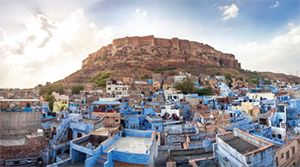
Blue City and Mehrangarh Fort on the hill at sunset in Jodhpur, Rajasthan, India.
Pikoso.kz/shutterstock.com
Children in school uniforms—boys in blue shirts and khaki pants, girls in salweer kameez with a blue tunic—walk together smiling, locked in animated conversation, strolling home after the rigors of school where the government provides milk and other nourishment to help even the poorest villager gain a toehold on the way up the economic ladder.
Past the villages, the road travels on the side of large farms. The vistas in rural India are riveting. In fields, women with saris the color of bougainvillea crouch to the ground to cut the wheat, looking in the distance like flowers that have miraculously bloomed amidst the green fields, carried by seeds tossed in a swirling wind. Along the road, women walk with stately grace, balancing on their heads metal cans—probably filled with milk—that glint like silver in the sun.
Even a short trip on the main roads is a harrowing experience: Motorized vehicles—buses, trucks, motorbikes—shoot down the road, constantly switching lanes to pass someone or something slower, blasting horns to signal the jump to the next lane even though a bus or a lorry is just up ahead raging along with the speed and ferocity of a locomotive.
Lanes are theoretic constructs—aspirations really—because a bus and truck will often drive side by side, going in the same direction on a two-lane road, trying to pass each other, pushing whoever or whatever is slower to a shoulder of brown gravel. A sign from the government says helpfully, “Lane Driving Is Safe Driving,” but I never saw anything that approached bidirectional travel.
To me, driving in India is a cross between the game of Chicken and Russian Roulette, with drivers executing maneuvers quite like the high-speed flybys in the movie Top Gun.
As I learned watching TV in India, cricket is a major interest, if not fixation there, and the batsmen have great skill. A spinning, twisting, gyrating ball, bouncing off slick grass could baffle even the best athlete in the world—someone with 20/10 vision and great reflexes with instantaneous responses—but somehow batsmen hit it.
I do not think that even the top batsman during the Ashes (i.e., a test cricket series played between England and Australia) faces as many truly difficult split-second decisions as the average driver in India, but the stakes on the road are high.
Amir was a whiz at this type of traffic, navigating the lunky Toyota with great finesse. Interestingly, although Amir has skills worthy of a Formula One driver, he uses a bicycle at home. He is saving up for a motor bike.
As a long-time investigator, however, I know a problem worthy of research when I see one, when it is time to think big & when it is time to think outside the box—or at least make the box bigger. Traffic injuries are such a problem.
Even as a passenger—cowering in the back seat, often covering my eyes—I found that driving is thrilling in its own way. The color of India is striking, always vibrant, with women even in the most menial jobs dressed magnificently. I saw a woman polishing a guard rail on the highway, but she looked ready for a party. The Tata and Ashok Leyland Trucks are decorated with elaborately painted pictures of gods and goddesses, flowers, luxuriant gardens in bright yellow and orange and neon green. From the rear view mirror of the trucks, streamers of plastic flowers bob and dance in the rushing wind.
Everywhere there is the noise of honking horns, with every pass, lane change and evasive maneuver accompanied by a beep, blare or blast. Some of the truck horns are quite melodic, as if the drivers could choose a tone or song like those available on a cell phone. I honk my horn in Durham every few years, but the average driver in India probably honks hundreds, if not thousands, of times a day, whether on a brief trip to the market or cross-country journey. Honking is not an annoyance or disturbance from a frustrated or angry driver. It is an essential act of safety to provide a semblance of order to an otherwise mad and frenzied place. Most trucks have a sign painted in ornate green or red letters that says, “Horn please.”
I did not see policemen, traffic signs or stop lights. The only thing that seems to regulate the traffic are the omnipresent cows, which meander across the road, this way and that way, at whatever speed they choose. Cows are sacred, and motorists respect this status, with this religious observance slowing traffic often to standstill, moderating what could otherwise be a raging torrent of vehicles. The cows in India look thin, even emaciated, but such may be the normal state of bovine affairs. Like their human counterparts, cows in America most likely have the metabolic syndrome from an overabundance of corn in the feed lots that boosts their fat to provide the unique taste of seared marbled meat so beloved in America.
Alas, cows do not suffice for traffic control, and at night, the roads are carnage. I personally did not see an accident, a situation that mystified my postdoctoral fellow from Mumbai who said he saw one almost every day on the way to his university. Although I did see a dead cow on the roadside, a victim of a hit-and-run, road accidents in India occur with incredible regularity, inflicting an extraordinary toll of death and injury, which can dwarf in size and impact that of any musculoskeletal disease in the Western world.
My American Safety Solution
Like most Americans, however, I am an optimist who thinks simplistically and would imagine that traffic control does not need much scientific inquiry. Rather, it should be amenable to approaches that have seemingly worked well in our country (bearing in mind that we still have terrible problems with drunk driving).
I would, of course, start with safer vehicles, replacing the two-wheelers with big four-wheelers with plenty of steel, like our safety-rated models with ABS brakes, air bags and electronic wizardry to alert the driver to avoid hazards.
I can only imagine what would happen in India with the neat device on a Mercedes that beeps when the car veers into another lane. It would sound nonstop and probably blow up from an overheated circuitry.
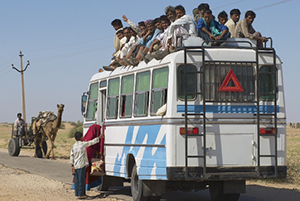
Passengers crowd a bus in Jamba, India. Public transportation in the Great Thar desert, Rajasthan, is usually overloaded.
Dmitry chulov/shutterstock.com
The better vehicle solution seems out. People in poor countries use animals and two-wheelers for conveyance because they are poor and cannot afford anything bigger, better or safer. A modern car would take a lifetime of earnings to purchase, even with no money down and 0% financing. Even with affordable cars, however, the price of fuel would be excessive and can only rise as the world competes for dwindling supplies. With more cars on the road, pollution—air and noise—would be magnified, and levels of carbon dioxide would rise even faster than they are now—and that is already alarming. If nothing else, bicycles do not produce carbon dioxide.
If more cars are not the solution, I would think that perhaps better roads would work. With wide lanes and smoother pavement, crowding, chaos and death-defying lane switches would have to diminish. Why not build four-, eight- and even 12-lane expanses of asphalt and concrete—nicely demarcated by broken, single and double lines to show where the lanes are and strong metal guard rails to keep traffic going into town safely separated from traffic going out of town?
With the equivalent of our US 5, 85 or 95, highway order would be possible and the toll of death and musculoskeletal injury should fall.
If only life were so simple.
India does have some new highways, but they are far away from the solution of some deep and exasperating problems. The Yamuna Highway is such an example. This modern six-lane highway goes between Delhi and Agra, the site of the Taj Mahal and home of a shoe industry started by the former Untouchables.
The Yamuna Highway is designed to cut travel time in half, but it has its restrictions. As the website says, push carts and bullock carts are not allowed. Further, as a toll road, the cost is high—prohibitively so for most travelers—and there are few entrances and exits. As a result, the road is quite empty, or at least it was on the day I did the trip. Boredom sets in quickly, especially for those accustomed to the energizing chaos of the regular roads which demand constant awareness of all senses. Alas, drivers fall asleep on the open highway and crash.
The modern road has other hazards. Without the crowding of the regular roads and the traffic slowing from the meandering cows, cars can speed. In the summer when the temperature in that part of the world reaches 45–50º C, the road is frying pan hot. Friction from tires spinning on the concrete adds its heat to expand the air in the tires. Pressure rises ominously, and tires explode causing terrible high-speed wrecks. Tires of the NASCAR kind could probably survive this environmental assault, but such tires are very, very expensive, like $350 to $450 for each tire, and they only last about 60 laps, which is more or less the distance from Agra to Delhi.
A road sign read, “Over speed will invite prosecution,” but it should say, “Over speed will invite catastrophe,” but the cars whiz along.
The modern highways seem to have other problems that add to the woes. To keep out those who can’t afford the toll, the Yamuna highway is surrounded by barbed wire fences a few feet high. Barbed wire, however, may not suffice, because I saw three men lifting a motor bike over the fence, no doubt to avoid the toll and drive some distance before repeating the process somewhere down the road to get off the road.
Lifting a motor bike poses its share of musculoskeletal hazard.
Amir also told us about shootouts at the toll plazas when locals, who objected to paying for a trip they usually could get for free, opened fire on the toll collectors.
Putting in a new road may not be so easy when all the costs and complexities are included in the calculation. As in the case of new drugs, new roads have serious side effects, and there are risks and benefits.
Facing these challenges, where do the innovations and breakthrough technologies come from to make roads safe? Clearly, I do not know. I am an immunologist, not a civil engineer, and I lack the intuition of an Einstein, Darwin or Newton to conjure a way forward to improve this aspect of global health. As a long-time investigator, however, I know a problem worthy of research when I see one, when it is time to think big and when it is time to think outside the box—or at least make the box bigger. Traffic injuries are such a problem.
Introspection
I am not sure whether I am ready to exchange my work in rheumatology for something new, but if I were, I would mark its start to the backseat of a Toyota Land Cruiser roaring and rolling down the wild roads of Rajasthan.
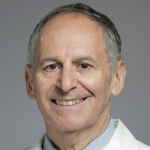 David S. Pisetsky, MD, PhD, is a professor of medicine and immunology at Duke University School of Medicine in Durham, N.C. He is also chief of rheumatology at the Durham VA Medical Center. He was the editor of Arthritis & Rheumatism from 2000 to 2005. He was the first physician editor of The Rheumatologist, serving from 2006 to 2011.
David S. Pisetsky, MD, PhD, is a professor of medicine and immunology at Duke University School of Medicine in Durham, N.C. He is also chief of rheumatology at the Durham VA Medical Center. He was the editor of Arthritis & Rheumatism from 2000 to 2005. He was the first physician editor of The Rheumatologist, serving from 2006 to 2011.
